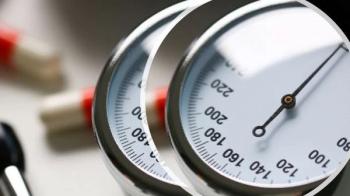
AHA-BP: Californians Low Users of Hypertension Medication
TUSCON, Ariz. -- Less than half of the hypertensive patients in California take blood pressure lowering medications, researchers found.
TUSCON, Ariz., Oct. 1 -- Less than half of the hypertensive patients in California take blood pressure lowering medications, researchers found.
Having routine medical visits appeared to be the most predictive factor for use of medication among the 49.4% of those who do take antihypertensives, according to survey findings presented here at the American Heart Association's Conference of the Council for High Blood Pressure Research.
Those who had seen a physician in the prior year were 5.23 times more likely to take medication for their hypertension, reported David J. Reynen, M.P.P.A., M.P.H., of the California Department of Public Health in Sacramento, Calif., and colleagues.
"Everybody who had hypertension as they define it here would need drug therapy," commented Daniel W. Jones, M.D., of the University of Mississippi Medical Center in Jackson, Miss., and president of the American Heart Association.
While cautious in making a comparison between surveys, he said the findings for California do not compare favorably to the 61% medication use rate among hypertensive adults in the 1999 to 2004 National Health and Nutrition Survey (NHANES).
"It is another reminder of how few people have adequate therapy for high blood pressure," he said.
To get a clearer picture of hypertension in California, Dr. Reynen's group added a series of questions on blood pressure diagnosis and medication use to the 2003 California Health Interview Survey.
Among 42,044 respondents to the telephone survey, 11,467 reported physician-diagnosed high blood pressure. The age-adjusted prevalence of self-reported hypertension was 24.5%.
These findings are similar to national figures from NHANES, Dr. Jones said, although again cautioning about differences between the surveys.
Hypertension prevalence was similar between genders, 24.8% for men and 24.2% for women. It was highest among African-Americans (35%) followed by American Indians (29.8%), Pacific Islanders (27.2%), those of "other" race or ethnicity (25.9%), Latinos (25.0%), and Asians (24.5%) with the lowest prevalence among whites (23.1%).
Although these respondents were not asked how high their blood pressure was, 49.4% reported use of antihypertensive medication with no difference between genders (49.9% for men and 48.7% for women).
Again, the rate was highest among African-Americans (56.6%) followed by American Indians (53.1%), Asians (52.1%), Pacific Islanders (52.0%), whites (49.0%), Latinos (45.8%), and those reporting "other" race or ethnicity (44.4%).
The high rate among African-Americans represents a dramatic departure from trends even a few years ago, Dr. Jones said.
"There has been a large push from a lot of national organizations to try to improve the awareness and use of medication in the African-American community," he said. "It's gratifying to see that the rates were higher."
However, race and ethnicity were not the most important predictors of medication use. The age-adjusted odds ratios for use of blood pressure lowering medication among hypertensive Californians were:
- Highest for respondents who reported seeing a physician in the prior year compared with those who did not (OR 5.23, 95% confidence interval 3.95 to 6.92).
- Higher for those with diabetes than for those who do not have diabetes (OR 2.47, 95% CI 1.92 to 3.18).
- Better for those with health insurance than for the uninsured it (OR 2.05, 95% CI 1.63 to 2.60).
- Higher for African-Americans than whites (OR 1.71, 95% CI 1.32 to 2.22).
- Higher for those who reported fair-to-poor health status than those who reported good health (OR 1.46, 95% CI 1.23 to 1.73).
- Higher for those with heart disease than without it (OR 1.40, 95% CI 1.13 to 1.75).
- Better for nonsmokers than smokers (OR 1.38, 95% CI 1.13 to 1.68).
- Higher for those born in the U.S. than for those born in foreign countries (OR 1.27, 95% CI 1.05 to 1.53).
- Better for those with at least some college education than for those with no formal education past high school (OR 1.21, 95% CI 1.06 to 1.38).
Physicians should keep these associated factors in mind when developing treatment plans, Dr. Reynen said.
Furthermore, "understanding these factors may allow for the development of strategies to increase blood pressure lowering medication use among those with high blood pressure," Dr. Reynen said, such as targeting certain racial or ethnic groups with messages that individuals with hypertension need to see a doctor.
Newsletter
Enhance your clinical practice with the Patient Care newsletter, offering the latest evidence-based guidelines, diagnostic insights, and treatment strategies for primary care physicians.
















































































































































































































































































